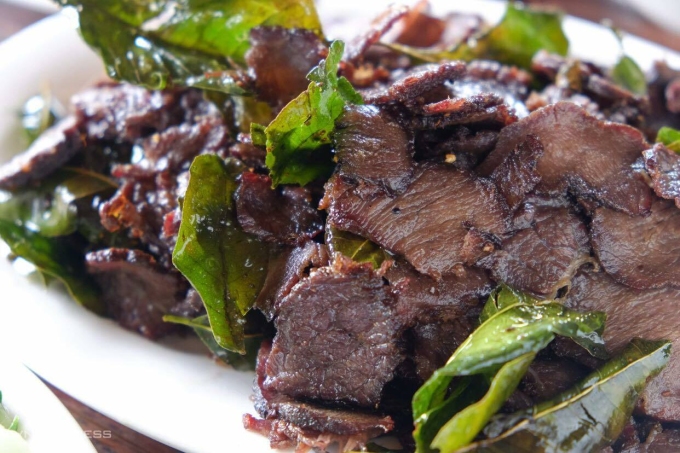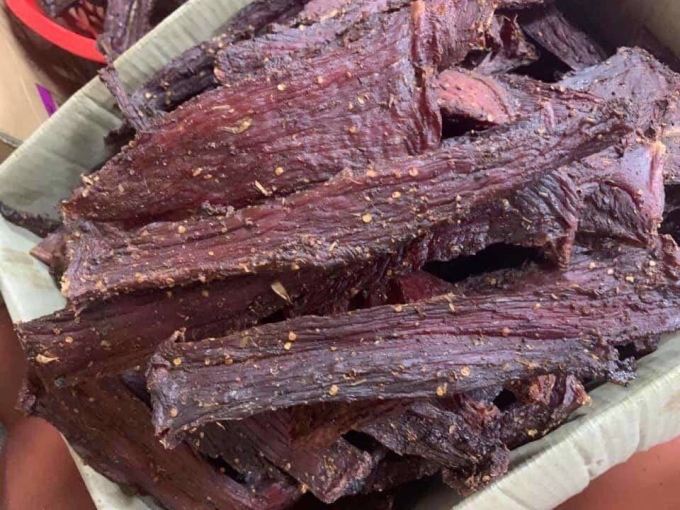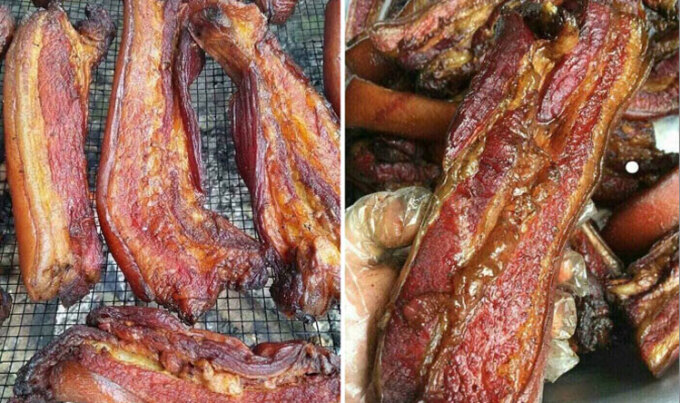Ha Giang specialties bought as gifts
The types of meat on the kitchen counter, flint, mint honey, or Quan Ba persimmon… are specialties that
HA GIANG – The Hmong’s firewood stoves are always red on winter days, and above their kitchen counters are often indispensable dishes of beef and pork hanging dry.
Cooked meat dishes of ethnic minorities in the northern highland provinces in general and Ha Giang, in particular, is considered a precious specialty. It is often used in festivals, receiving guests to play at home, and is what tourists often buy as gifts.
Beef and buffalo meat guard the kitchen
This specialty is made from cows grazing naturally, climbing hills and mountains to find grass to eat, so the meat is very firm. In Ha Giang, winter temperatures sometimes drop as low as 3-4 degrees Celsius. Therefore, beef becomes a nutritious staple food that can be processed and stored on cold winter days.
When making kitchen meat, people choose fresh, firm pieces of beef like corn and buttocks. The meat is cut along the grain into pieces 2-3 cm thick, 30-40 cm long. Ginger, garlic, chili are washed, peeled, pounded into a mixture, and then marinated for 3 hours to infuse. After that, people skewer the beef on bamboo sticks, put it on the kitchen attic to smoke the meat naturally. After 15-20 days, under the influence of the heat emitted from the coal, firewood… the meat will gradually become dry. At this time, people can bring down the meat for processing and use. The way to distinguish “standard” kitchen beef in Ha Giang is that the meat must have a shiny brown color, a little soot on the outside, a strong smell of smoke, chewy but fragrant.
There are two ways to prepare this dish. The first way is to incubate beef directly in the hot ash of a wood stove for 10-15 minutes. Then, bring out the meat, shake off the ashes, then take the knife and pestle to soften it gradually. Finally, we tear that piece of meat into small pieces and eat.
The second way, you can bring the meat soaked in hot water to soften, wash, thinly slice, and then stir-fry with fresh garlic leaves, add a little sugar, vinegar, or other spices depending on your preference. Stir-fried dried beef is often eaten with hot white rice, vermicelli…
Pork in the kitchen
This is a typical dish of the Mong people in Ha Giang, made from black pork. This is a breed of pig adapted to the harsh climate of the high mountains and is also naturally grazed like a cow. That is why the black pig here is very firm, the fat is thick but crispy and fragrant.
The meat used to hang the kitchen attic is bacon, lean meat. Sliced meat 5cm wide, 20cm long, marinated with salt, cardamom, ginger, garlic, chili mac Khen, white wine… After marinating for one night, people also use skewers and hang them on the kitchen floor. A week later, when the piece of meat is cooked, this dish is removed, wrapped in dried banana leaves, and stored in the attic. If the meat is stored for the right time, the meat will not dry out and cling to soot. Therefore, this dish should not hang in the kitchen for too long.
When Tet comes or on festive occasions, there are guests at home, the Mong people will take the meat down to process it into different dishes to treat. Need to soak the meat in hot water to soften the dry pork skin. After that, people will slice it very thinly and stir-fry with ginger, vegetables, lemon leaves, fresh garlic leaves, or wild vegetables.
The kitchen-guard pork has a special scent, which is the pungentness of the makhon, the smoky smell of the kitchen smoke, the softness of the fatty meat, the crispiness of the pork skin, and the bold sweetness of the lean meat. The cost of a kilogram of kitchen meat is about 400,000-500,000 VND.


